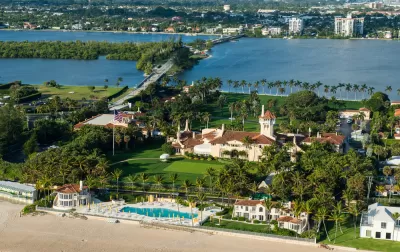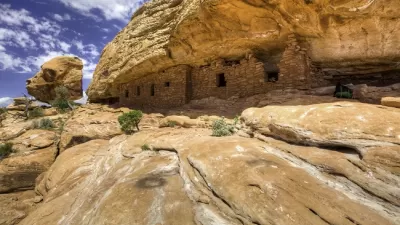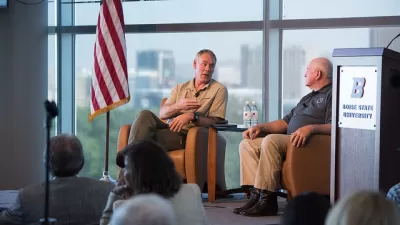After announcing the coast of almost all states would be open for oil and gas production, the Secretary of the Interior changed his mind on one after meeting with Trump’s favored candidate for Senate.

Reviewing a year of the Department of the Interior under Ryan Zinke, Elizabeth Kolbert notes that he is, "in many ways, a typical Trump appointee" in that "[n]early all Trump’s Cabinet members have shown disdain for the regulatory processes they’re charged with supervising."
Since he first rode into town and raised his flag over the agency, Zinke has reopened federal land for coal leases, recommended shrinking Bears Ears National Monument, expressed interest in making it easier to drill for oil and gas on public land, and rolled back regulation on methane.
Earlier this month, despite bipartisan opposition from both politicians and voters, Zinke announced he would open almost all of the coastal areas in the United States to offshore drilling.
Several days later, he took part of it back. After a brief meeting with Florida Governor Rick Scott, Zinke removed the state’s coast from consideration.
“The move was manifestly political. In the past, Scott has supported drilling for oil just about everywhere, including in the Everglades, but, with Trump’s encouragement, he is now expected to challenge Florida’s senior senator, Bill Nelson, a Democrat, in November.”
Even more recently, Zinke’s refusal to meet with the National Park Service Advisory Board prompted the resignation of nine of its 12 members.
"In the decades to come," Kolbert writes, "one can hope that many of the Trump Administration’s mistakes—on tax policy, say, or trade—will be rectified. But the destruction of the country’s last unspoiled places is a loss that can never be reversed."
FULL STORY: The Damage Done by Trump’s Department of the Interior

Planetizen Federal Action Tracker
A weekly monitor of how Trump’s orders and actions are impacting planners and planning in America.

Map: Where Senate Republicans Want to Sell Your Public Lands
For public land advocates, the Senate Republicans’ proposal to sell millions of acres of public land in the West is “the biggest fight of their careers.”

Restaurant Patios Were a Pandemic Win — Why Were They so Hard to Keep?
Social distancing requirements and changes in travel patterns prompted cities to pilot new uses for street and sidewalk space. Then it got complicated.

Platform Pilsner: Vancouver Transit Agency Releases... a Beer?
TransLink will receive a portion of every sale of the four-pack.

Toronto Weighs Cheaper Transit, Parking Hikes for Major Events
Special event rates would take effect during large festivals, sports games and concerts to ‘discourage driving, manage congestion and free up space for transit.”

Berlin to Consider Car-Free Zone Larger Than Manhattan
The area bound by the 22-mile Ringbahn would still allow 12 uses of a private automobile per year per person, and several other exemptions.
Urban Design for Planners 1: Software Tools
This six-course series explores essential urban design concepts using open source software and equips planners with the tools they need to participate fully in the urban design process.
Planning for Universal Design
Learn the tools for implementing Universal Design in planning regulations.
Heyer Gruel & Associates PA
JM Goldson LLC
Custer County Colorado
City of Camden Redevelopment Agency
City of Astoria
Transportation Research & Education Center (TREC) at Portland State University
Camden Redevelopment Agency
City of Claremont
Municipality of Princeton (NJ)




























